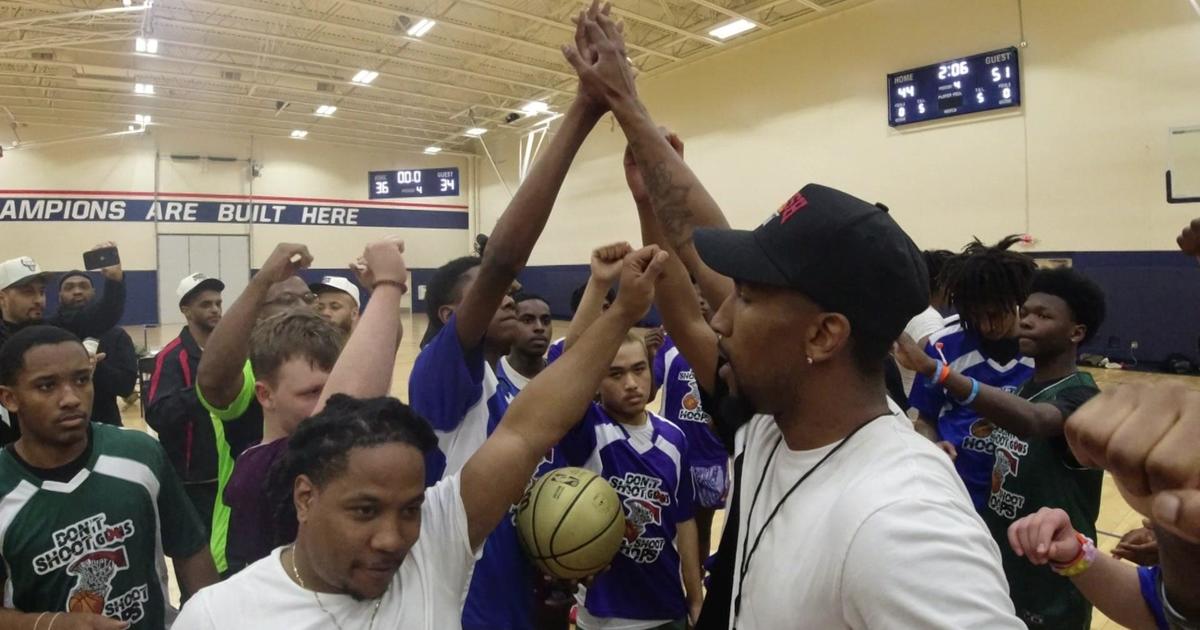YouthLink Helping Homeless Youth Find Direction At Life's Crossroads
MINNEAPOLIS (WCCO) -- You won't find them holding signs at busy intersections. Nor will they sit on Nicollet Mall begging for money. Instead they move stealth-like, hiding behind corners, ducking into city parks, trying not to be seen.
They're homeless and they just happen to be teenagers.
"I'm homeless, but I don't like to let people know I am homeless," said one young man named Gabriel.
He's 19 years old, has no address and no job. He is on his own.
"I don't want to be like this for the rest of my life," he said. "I really want to have a life."
Gabriel is one of thousands of Minnesota teens who live on the street. He spends his time walking, hoping for an opportunity to change his life.
His life was going nowhere until he walked into YouthLink and asked for help.
"Young people don't want to be known as homeless," said Dr. Heather Huseby, the executive director of YouthLink. "They want to be known as kids, they want to be known as young people."
More than 1,800 young people passed through YouthLink's doors last year. Their individual stories of homelessness may be different, but they share the same needs of shelter, food, clothing, and the opportunity for change.
"Usually they're coming in when they are about 17 or 18," said Huseby. "They are at a crossroads in their life."
One such youth, 20-year-old LaShon, says he has no family in Minnesota, has lived amongst homeless people for years, but liked what he saw at YouthLink.
"Before I heard about YouthLink, it was like...where am I going to go?" he said. "What is the next day I'm going to eat at?"
He added: "I actually saw a man die...I saw a lot of people commit suicide, I guess, just to get away from struggle."
LaShon and many other young homeless people do not want to stay in traditional homeless shelters. They say it's not safe for them to be there.
Like many others, LaShon and Gabriel find refuge in the back of city buses.
"Some bus drivers, they are cool with it," LaShon said. "They go 'Alright, sleep until I get done with my shift,' other bus drivers are like 'You can't do that, you've got to get off my bus.'"
Or they walk, from one side of downtown to another, making sure to watch their backs.
"At night time, a lot of the people that are start coming out and its more crime, because they get thirsty and they want money," LaShon said. "Three people can come out of nowhere, and it's done. Whatever you have on you, its their's."
YouthLink is a refuge from life on the streets for these young people.
"We still believe the light's on," Huseby said. "We still believe there is hope, and we still believe there is opportunity, and we don't want to look at these young people as a charity case. We want to look at these young people as opportunity."
The drop-in center is where they can go. It's a springboard to the next step.
"Every time you walk in, it's a big smile, 'Hello, how are you doing? What you want to eat? It's like welcome hands like you're at home," LaShon said.
Once they are fed, given clothes and a shower, the real work begins. YouthLink has many partners in its endeavor to end youth homelessness.
"This is a community issue," Huseby said. "We have the county that's here, we have a law clinic that's here, we have the Minneapolis schools that are here, we even have faith-based community that is here."
More than 30 community partners help young people get their basic needs met and provide them with what they need for a positive future.
"They know they can get a good meal, they can take a shower, they can get on the internet, they can see their friends, they can talk to staff about getting apartments, about getting your GED, anything you need help with they will help you with it," Gabriel said.
There is also a medical and mental health clinic. More than anything else, these young people need someone to talk to. A good number of the teens here have been in and out of foster care.
Some have been told to leave by their parent or guardian, because they could no longer afford to care for them.
Homelessness is not just an urban phenomenon. Suburban communities are also seeing an increase in young homeless people.
New drop-in centers have popped up in the western suburbs and Brooklyn Center. Organizations like YouthLink have seen a 91 percent increase in the number of teenagers needing help.
How you can help
So here is where you come in. You can call 1-800-542-9226 to help YouthLink serve the homeless.
Just $10 would provide bus rides for teenagers to get to work or school for a month. A $25 donation would provide a week of hot meals.
You can also help by texting "HOPE" to 612-200-1842.



